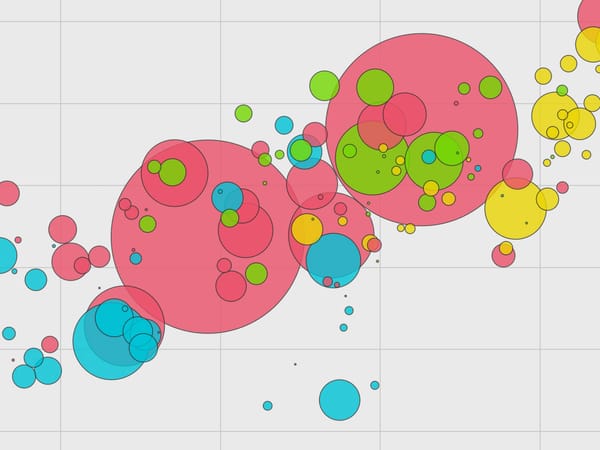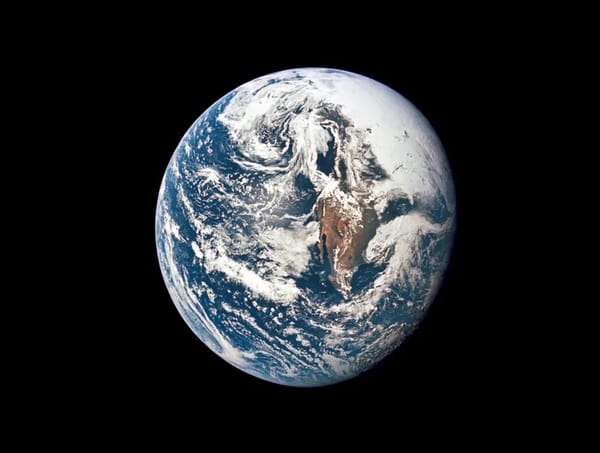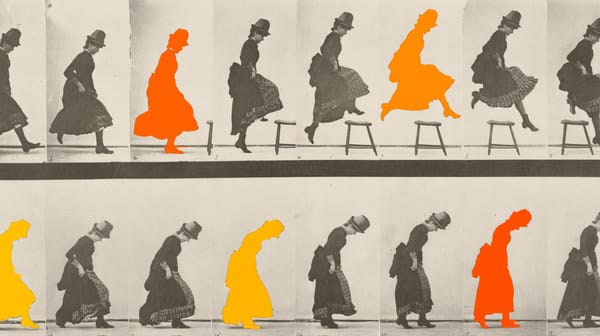Seeing Is Believing
Curator Gerald McMaster on valuing Indigenous ways of seeing
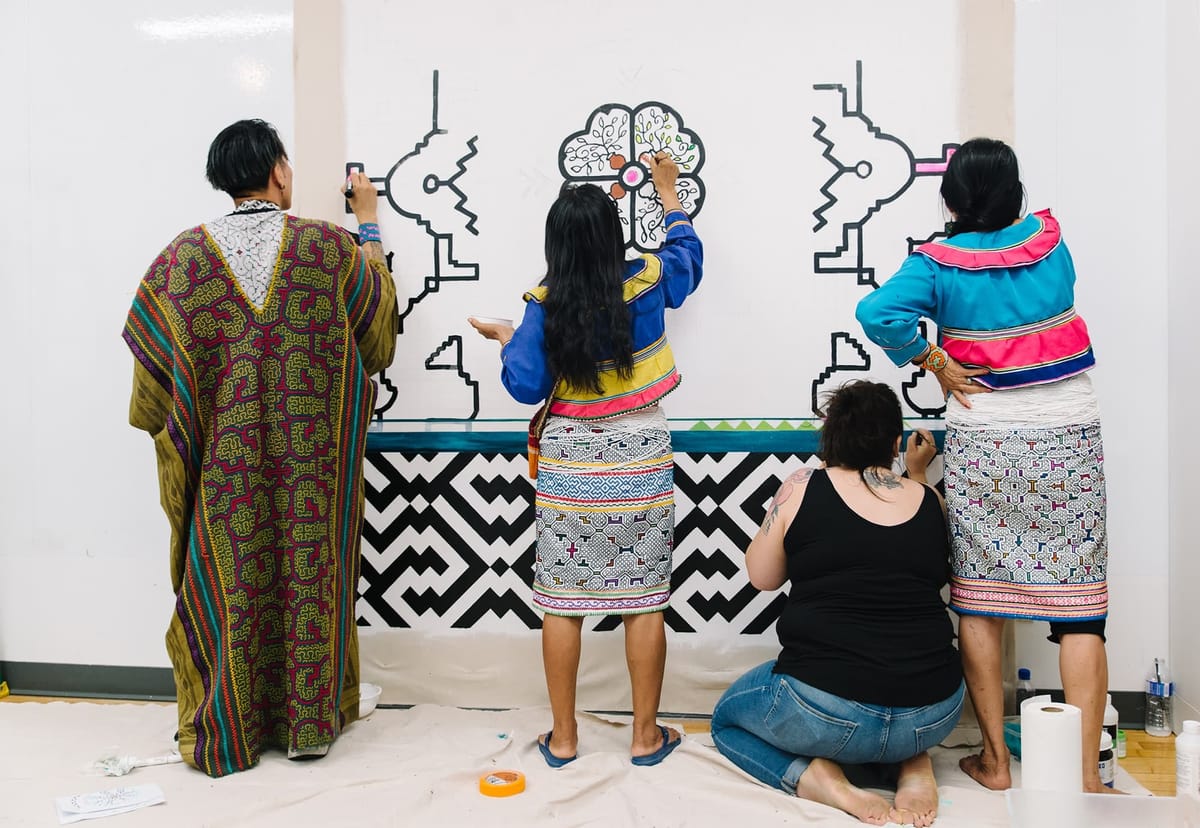
For more than four decades, Gerald McMaster has worked to promote Indigenous aesthetics and bring awareness of Indigenous makers to art institutions and their audiences. Recently retired from OCAD University, where he was director of the Wapatah Centre for Indigenous Visual Knowledge, McMaster is a recipient of the 2022 Governor General’s Award in Visual and Media Arts. In this interview, he discusses, “Arctic/Amazon: Networks of Global Indigeneity,” a years-long, multi-institutional effort to bring together Indigenous artistic communities from both regions. An exhibition of that name is on view at The Power Plant in Toronto until December 30. –Brian Sholis
Frontier: This exhibition is the result of an effort to establish richer connections between Arctic and Amazonian Indigenous communities. Can you talk about the origins of the project?
Gerald McMaster: A number of years ago I was in Australia while working on the Biennale of Sydney. I visited the country’s central deserts to get a better sense of artists’ practices there. We found numerous galleries in Alice Springs and I learned that people would take rolls of canvas into the Aboriginal communities, drop them off, and bring back to the city the paintings that had just been completed. Some would then be sent on to Sydney or Melbourne, where gallery owners would further distribute the work. It was an interesting, well-coordinated system.
What I like about this system is that it means artists do not have to leave their communities; the art world comes to them. Indigenous communities foster particular ways of looking at and describing the world around them, and the artists within them can remain connected to that. I felt at the time that it was related to the cooperatives in the Arctic, here in Canada, that do something very similar.
So the idea of connecting some parts of Canada with another part of the world, and looking for parallels or connections, stuck with me. Years later, I met a curator in Germany who had studied the Amazonian part of Ecuador, and the idea of working together to create a project connecting the Arctic and the Amazon came up. Working with a partner excited me.
The project evolved from Canada and Ecuador to become about connecting the global North and the global South, bringing together some of the exciting creative output of the Indigenous peoples in these two areas. Both communities are affected by European colonization, by Christianity, by extractive technologies. A picture of the connections between these two groups of communities emerged and we began asking ourselves how we could further the dialogue.
Frontier: Its first manifestation was a 2019 symposium in Toronto that brought together artists, scholars, curators, and others. More recently, the Center for Indigenous Visual Knowledge you lead at OCAD U held related workshops. One of those was on Indigenous Ontologies, and its description cites Yube Huni Kuin’s claim that all Indigenous knowledge is rooted in artistic knowledge. Will you elaborate upon that idea?
GM: One idea that may help this conversation is something we’ve been developing at Wapatah: a new notion of “ways of seeing.” We’re beginning to define it as another way of knowing. There is broadening interest in Indigenous ways of knowing, but we feel that ways of seeing are also wrapped up in this idea of an ontology. Indigenous people across the Americas have particular languages; they live in particular lands and landscapes. Living in these areas develops their ways of knowing. Language becomes a significant part of articulating the land around them and the world in which they live. This fact—of articulating and therefore conceptualizing your environment—is critical for how artists make their works.
Yube is spot-on about this: when I think of an Inuit artist, for example, who lives in a community, generally speaks the Inuktitut language, I feel I can see something of that embeddedness in their artworks. Visual knowledge is articulated so strongly in their artworks because it responds to that ontology of the land, of everything that’s on the land.
We tend to assume we all see the world the same way. But we conceptualize the world through language, which formulates our ways of perceiving. If we start to use and think about that notion, then we can begin to see that these artists see the world differently. That’s why we are interested in seeing these two zones, what they’ve created, together. It allows us to develop and present new ideas to the broader world.
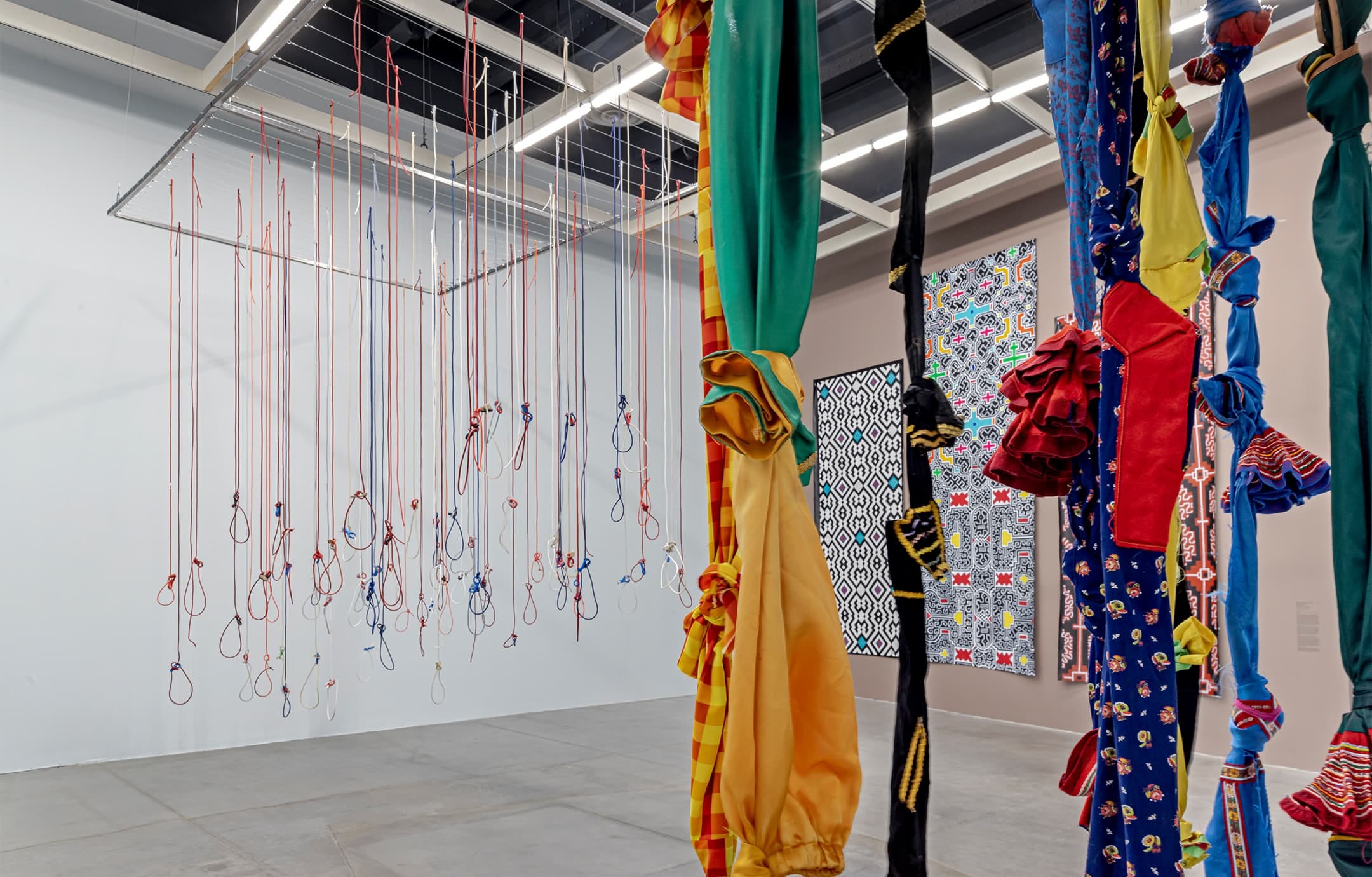
Frontier: Did any direct connections or even collaborations emerge from this long scholarly and curatorial process?
GM: The exercise was manifold. We wanted to make connections, bring the artists together, and have them participate in a public dialogue, but also to draw inspiration for our work from the 2019 symposium. We didn’t want to artificially bring artists together and say, “You guys should collaborate.” But the mural at Toronto Metropolitan University did bring together a team of artists: one from Peru, the other from Arctic Quebec. They worked together for a week, spending time together in a studio, singing, exchanging ideas and thoughts about their lives, and then painting, with the help of students, what they titled The Landscapes of Us. Looking at it, I can’t tell which parts are Inuit and which parts are from the community in Peru; it all seems to be one vision. Singing was integral to the process; the mural is a song made visual.
Frontier: In adjacent upstairs galleries, the exhibition includes two roughly hour-long videos documenting shamanic ceremonies in Brazil. Broadly speaking, they employ different cinematic languages: one is more “documentary” and one is more evocative, or poetic. Can you talk about the importance of employing multiple narrative approaches when making documents of Indigenous cultures?
GM: It’s an interesting question in part because there was a time when religious, spiritual expression was outlawed by governments. It may still be, in some places. So much has nearly disappeared; a lot of spiritual expression went “underground,” had to be practiced clandestinely. Now is the chance for Indigenous peoples most everywhere to return to their sources of inspiration, their philosophical underpinnings, their ways of expressing their world views.
When documenting that, we have to go with their authority; they must have the agency in presenting themselves to the world. One of the films you reference was created by an Indigenous Yanomami filmmaker; the other by two non-Indigenous filmmakers from bigger cities in Brazil. They created two very distinct films of similar ceremonies. But in either case, the effect is largely formal: we get to see the ceremony but we don’t get to understand it. It takes a lifetime to understand something like that. The visual differences are therefore perhaps not indicative of true differentiation. Instead, they are different means by which you can begin to see how Indigenous peoples know and articulate their worlds.
Frontier: You’ve just retired from OCAD U, so this project might be seen as a capstone, a summation of your decades spent advocating for Indigenous artists and for bringing Indigenous ways of knowing and thinking into broader recognition. What downstream effects do you hope this project has?
GM: The first is to see Amazonian communities, to see the Indigenous artists in Central and South America, benefit from more connections to other places. I want the outside world to know what great work goes on in these communities, as we’ve learned with artists in the Arctic and in Australia. I think the Amazonian artists are beginning to be recognized in their countries, but I want them to be more widely recognized for their creativity.
Secondly, I’d like to see more work done to integrate this idea of Indigenous ways of seeing into the Western art world. And, since you’re calling from a design studio, it’s important to mention that I see these Indigenous ways of seeing influencing design as well. How can Indigenous viewpoints continually be noticed?
Artists everywhere want to tell people who they are, where they come from, what they hope for. I want for all of them to have those opportunities and hope to be alive to begin seeing more and more receive them.
Things That Make You Go 🤔 …
🟩 Metropolis recently featured an elegant new building by one of my favorite architecture firms, Nomos, that integrates social housing and apartments for people with mental disabilities in a suburb of Geneva. An elegant layout and green tiles for everyone.
🎙️ Reviewing the new podcast Death of an Artist in Artforum, Gabrielle Schwarz asksm “How should Ana Mendieta’s story be told?” The artist died after falling from the window of the thirty-fourth-floor apartment owned by Carl Andre, an older and more famous artist with whom she’d begun a relationship several years earlier. “It’s undeniably engrossing. But it can also be somewhat uncomfortable to find yourself racing from one episode to the next. Although the tone of the narration is sensitive, the subject is still the death of a beautiful young woman.”
👨🏻💻 “If you want a glimpse of what you’ll be doing during the week in ten years, you’ll find a lot of it on Linus Lee’s laptop.” That’s how Dan Shipper introduces his interview with Lee, whom we’ve admired since he first discussed his Monocle project in summer 2021. The conversation focuses on the exciting generative-AI tools Lee has hand-coded to help him with his research. One important lesson of them, confirmed by the excitement around ChatGPT, is that interfaces are key: “Prompting models are still a kind of dark art, and for generative models to live up to their potential, humans are going to need much more precise and predictable control over their output.”


